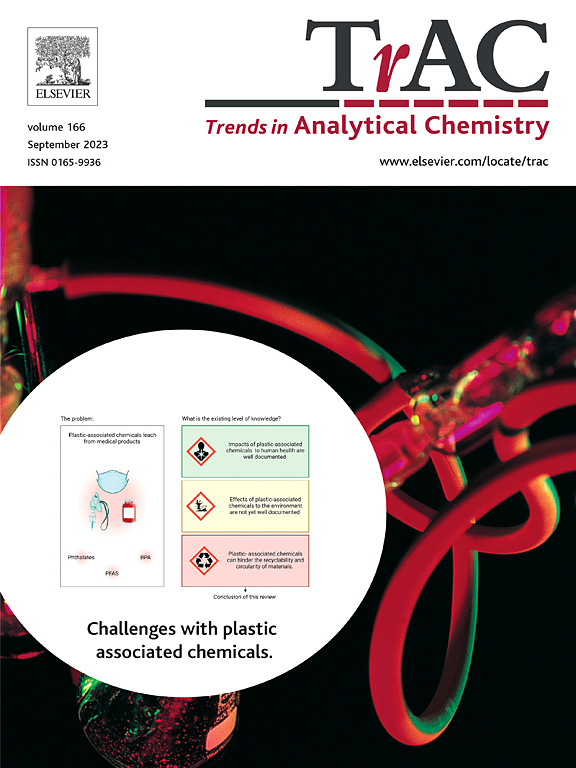Advances in solid-phase microextraction for detecting endocrine disrupting compounds in environmental and biological matrices
IF 12
1区 化学
Q1 CHEMISTRY, ANALYTICAL
引用次数: 0
Abstract
The widespread occurrences and adverse effects of endocrine disrupting compounds (EDCs) pose significant threats to the environment. Due to their persistence, bioaccumulation, and toxicity, EDCs migrate through environmental compartments and accumulate in organisms, resulting in health risks to humans. This concerning paradigm necessitates robust detecting strategies for EDCs across both environmental and biological matrices. Solid-phase microextraction (SPME) has emerged as a powerful analytical technique, particularly effective for complex matrix analysis. The miniaturization and non-exhaustive extraction characteristics of SPME make it uniquely suitable for both on-site and in vivo implementations. This review critically evaluates recent advances (2020–2025) in SPME applications for EDC detection in environmental and biological matrices. The discussion encompasses in-lab and on-site SPME approaches for environmental detecting, while also addressing in vitro and in vivo SPME methodologies in biological specimens. Finally, the future emerging trends and research directions in this field are proposed based on the recent achievements.

固相微萃取法检测环境和生物基质中内分泌干扰物的研究进展
内分泌干扰物(EDCs)的广泛存在和不良影响对环境构成了重大威胁。由于其持久性、生物蓄积性和毒性,EDCs通过环境隔间迁移并在生物体中积累,对人类造成健康风险。这种有关范例需要在环境和生物基质中对EDCs进行强大的检测策略。固相微萃取(SPME)已成为一种强大的分析技术,尤其适用于复杂矩阵的分析。SPME的小型化和非穷尽提取特性使其独特地适用于现场和体内实施。本文综述了SPME在环境和生物基质中检测EDC的最新进展(2020-2025)。讨论包括实验室和现场环境检测的SPME方法,同时也涉及生物标本的体外和体内SPME方法。最后,结合近年来的研究成果,提出了该领域未来的发展趋势和研究方向。
本文章由计算机程序翻译,如有差异,请以英文原文为准。
求助全文
约1分钟内获得全文
求助全文
来源期刊

Trends in Analytical Chemistry
化学-分析化学
CiteScore
20.00
自引率
4.60%
发文量
257
审稿时长
3.4 months
期刊介绍:
TrAC publishes succinct and critical overviews of recent advancements in analytical chemistry, designed to assist analytical chemists and other users of analytical techniques. These reviews offer excellent, up-to-date, and timely coverage of various topics within analytical chemistry. Encompassing areas such as analytical instrumentation, biomedical analysis, biomolecular analysis, biosensors, chemical analysis, chemometrics, clinical chemistry, drug discovery, environmental analysis and monitoring, food analysis, forensic science, laboratory automation, materials science, metabolomics, pesticide-residue analysis, pharmaceutical analysis, proteomics, surface science, and water analysis and monitoring, these critical reviews provide comprehensive insights for practitioners in the field.
 求助内容:
求助内容: 应助结果提醒方式:
应助结果提醒方式:


